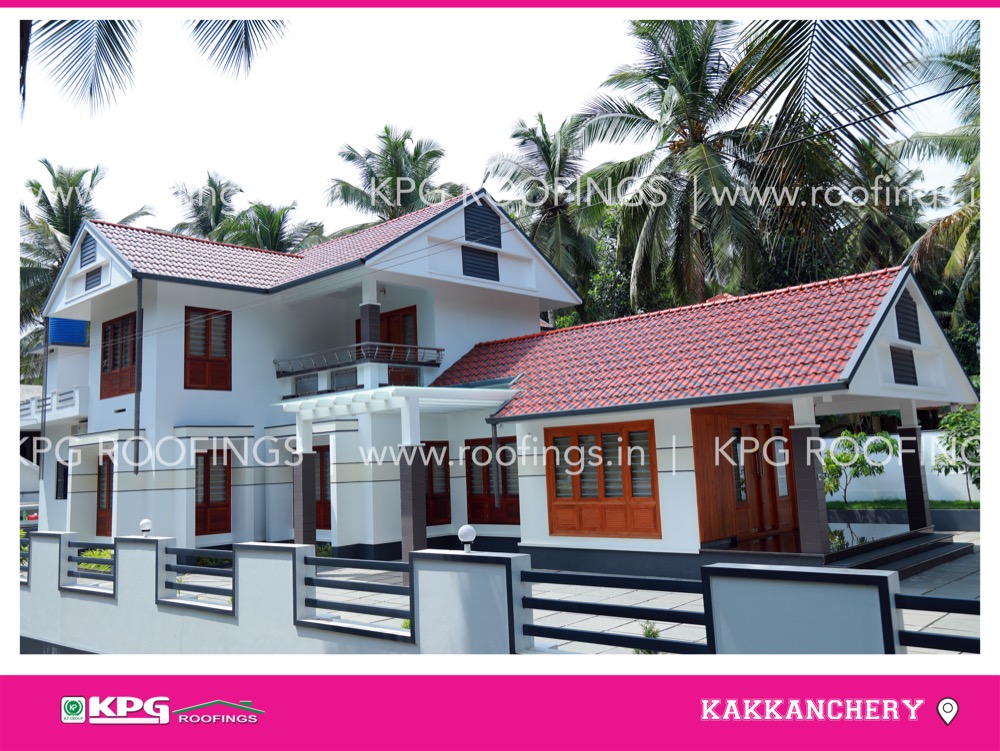When it comes to roofing, every component has its unique purpose and contribution to the overall structure’s stability. One such element that often raises questions is the use of nails in hanging ceramic roof tiles. Unlike traditional clay tiles, ceramic tiles don’t have legs or hangers to support their weight. So, how do these tiles stay in place, and why might they still require nails, even if they’re not nailed down?
There’s often a debate: nails or screws? While these tiles are designed to interlock and stay in place, some situations call for extra measures. Let’s dive into the world of fasteners and find out what works best.
The Anatomy of Ceramic Roof Tiles
Ceramic roof tiles are celebrated for their enduring strength and visual charm. Unlike traditional clay tiles, ceramics are the result of a specialized manufacturing process that imparts uniformity and slimness to their shape. This uniqueness is achieved by eliminating the legs or hangers typically found on clay tiles, which are integral for their support and spacing during installation.
The Challenge: The Absence of Legs
With no legs or hangers to rely on, ceramic tiles face a distinctive challenge: how to remain firmly in position. Unlike clay tiles that interlock or depend on their hangers for stability, ceramic tiles must find an alternative means of secure attachment.
Nails: The Silent Saviors
To solve the “no legs” problem, ceramic tiles often call in the cavalry – nails. But don’t worry; these nails aren’t there to nail the tiles down like you might hammer a picture frame. Instead, they’re like the invisible legs that these tiles never had
- Hanging Tiles: Roofing professionals employ stainless steel nails or rivets to hang ceramic tiles. These nails step into the role of invisible legs, bearing the tiles’ weight and averting any unruly shifts or untimely descents.
- Spacing and Strength: The strategic placement and well-calculated spacing of these nails are pivotal. They ensure each tile enjoys adequate support and uniform placement, thus bolstering the stability of the entire roofing structure.
corrosion resistance
An essential consideration when using nails in ceramic roofing is their composition: stainless steel. The preference for stainless steel nails arises from their exceptional resistance to rust and corrosion. Roofing tiles, including ceramic ones, face exposure to the elements, including rain and moisture. Opting for stainless steel nails acts as a shield against rust-related woes, preserving the roof’s long-term resilience.
Screws: Another choice
In regions with harsh weather conditions or exceptionally strong winds, screws are sometimes chosen over nails. These robust fasteners offer added stability, which can be a game-changer in extreme environments. These tiles can be screwed to the purlins and this will give it more strength and support. If we hang with just nails in these areas, it may fly off.
Screws: Pros and Cons
While screws can provide exceptional strength, they come with their own set of challenges. One significant drawback is their accessibility. Picture this: you need to replace a single tile at the bottom of your roof. If screws hold your tiles in place, you’re in for a bit of a puzzle.
To access that troublesome tile, you’ll first need to remove all the tiles stacked on top of it. It’s like taking apart a stack of books just to reach the one at the bottom. Once the top tiles are off, you can unscrew the problem tile, replace it, and then reinstall all the tiles above. Why? Because the screwing area of the bottom tiles is covered by the tile above, making them inaccessible without some deconstruction.
Also screwing is a hazardous task and takes up much time. so most of the time, the labours suggest to install it by hanging with nails or screws or rivets, which are corrosion resistant.
conclusion
While ceramic roof tiles aren’t typically nailed or screwed down in the traditional sense, there are circumstances where these fasteners come into play. Nails are the time-tested choice, offering reliability and rust resistance. Screws provide additional strength, especially in areas with extreme weather. However, they can be a headache when it comes to tile replacement. The best approach depends on your location, the skill level of your installation team, tile thickness, and the desired level of stability. In some scenarios, a combination of both nails and screws might be the ultimate solution, offering durability and ease of maintenance. So, when it comes to securing ceramic roof tiles, the choice isn’t always black and white – sometimes, it’s nails and screws.








 It is also a fact to keep in mind. Your colour scheme should stand in accordance with your neighbourhood also. A holiday home in the woods will looks better with teracotta or pista green shades, while a futuristic home in the town or highways would look better with special colours like antique red, galaxy or some jasper series colours. Be it in beach side, village, mountains, colonies or wherever your home is, You should consider that also as a factor when picking a colour for your roof tile.
It is also a fact to keep in mind. Your colour scheme should stand in accordance with your neighbourhood also. A holiday home in the woods will looks better with teracotta or pista green shades, while a futuristic home in the town or highways would look better with special colours like antique red, galaxy or some jasper series colours. Be it in beach side, village, mountains, colonies or wherever your home is, You should consider that also as a factor when picking a colour for your roof tile.